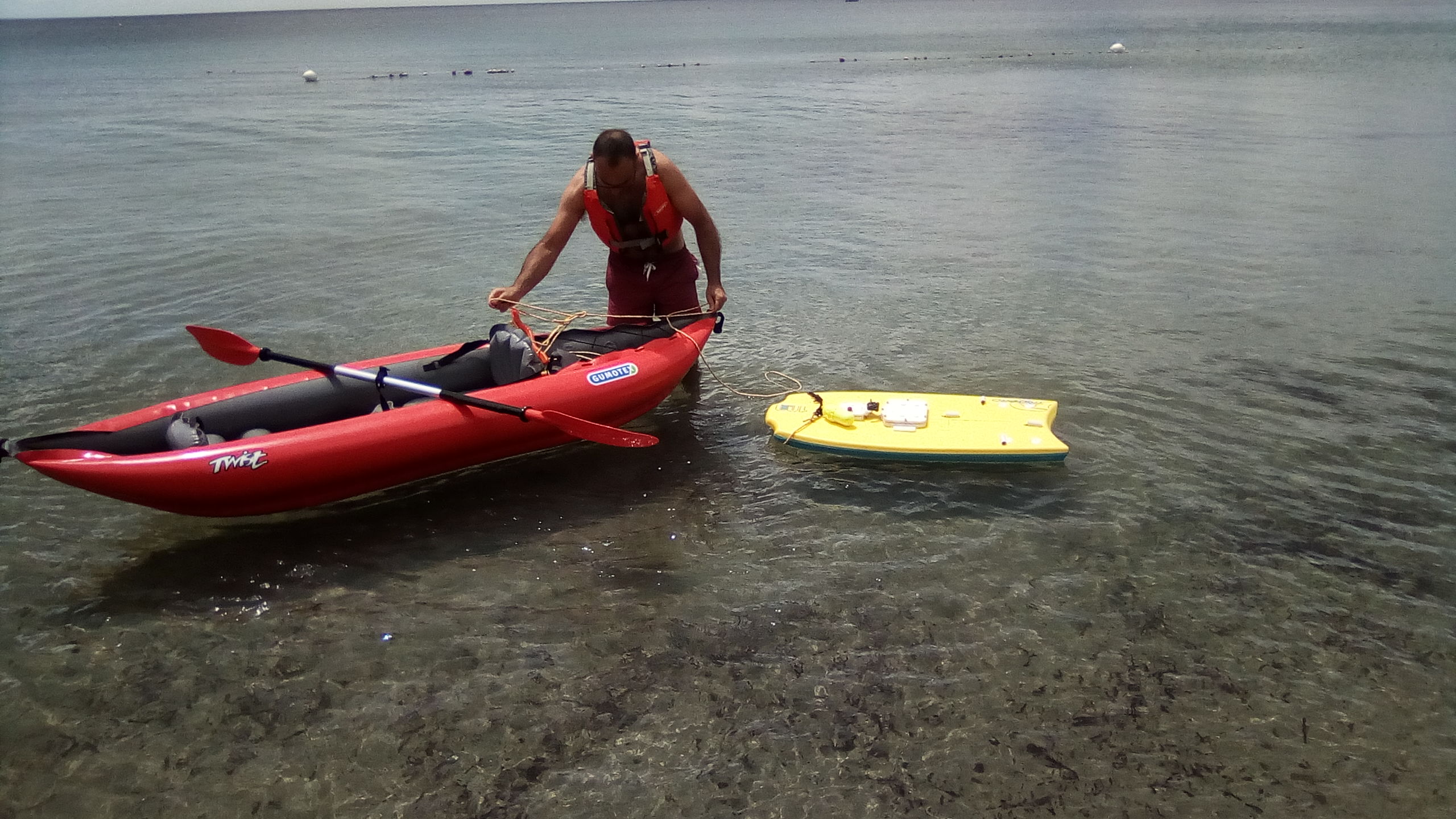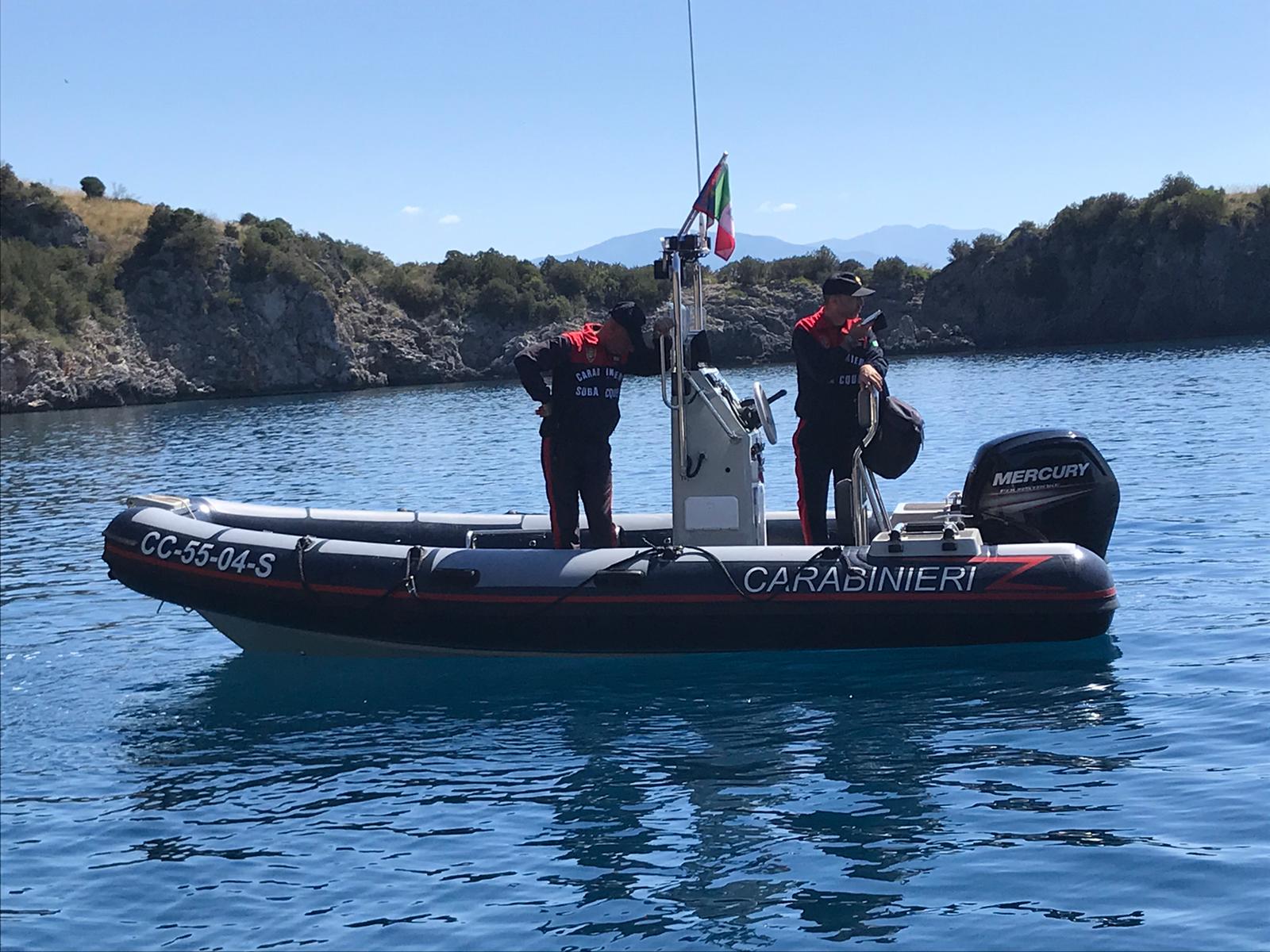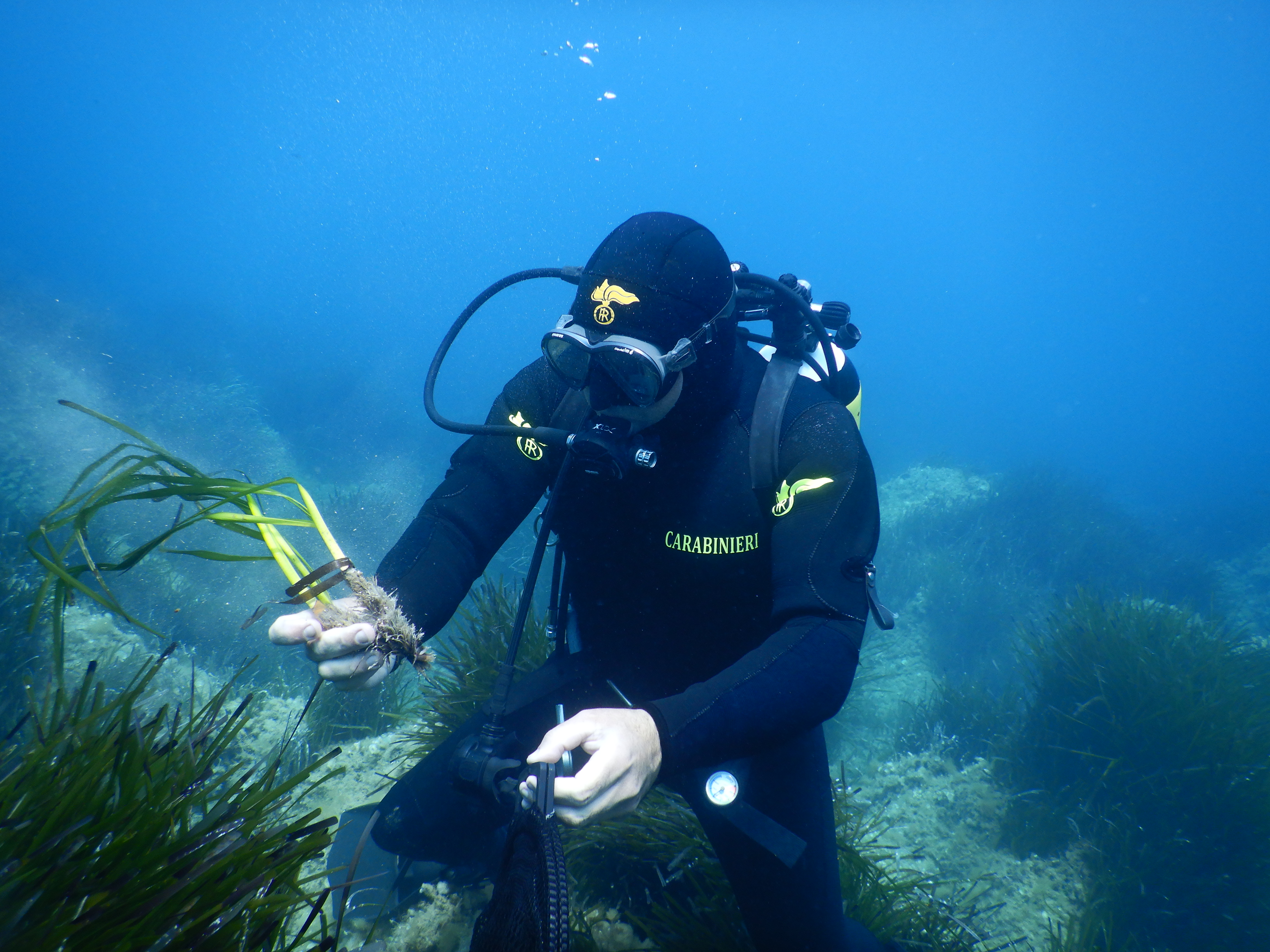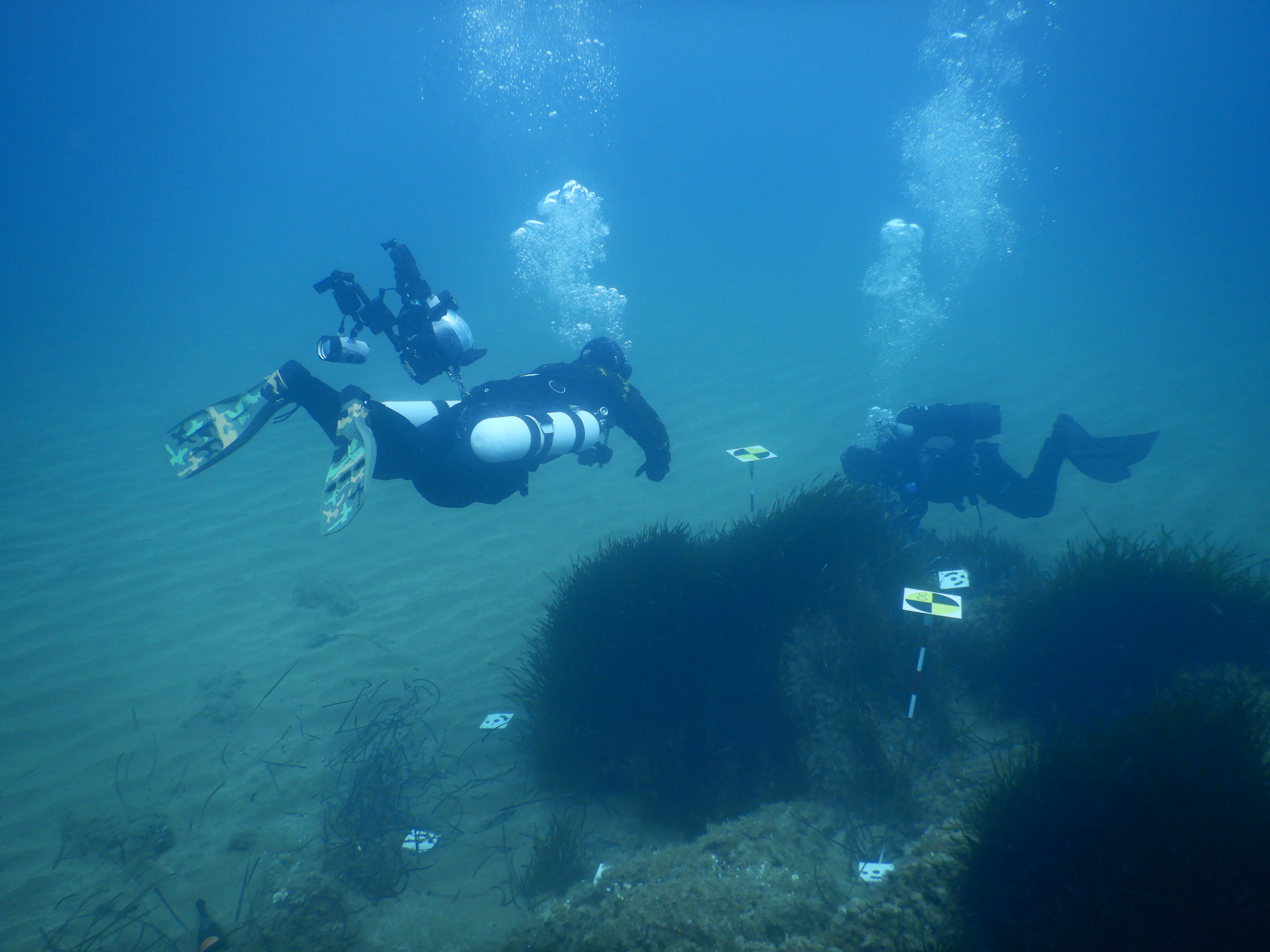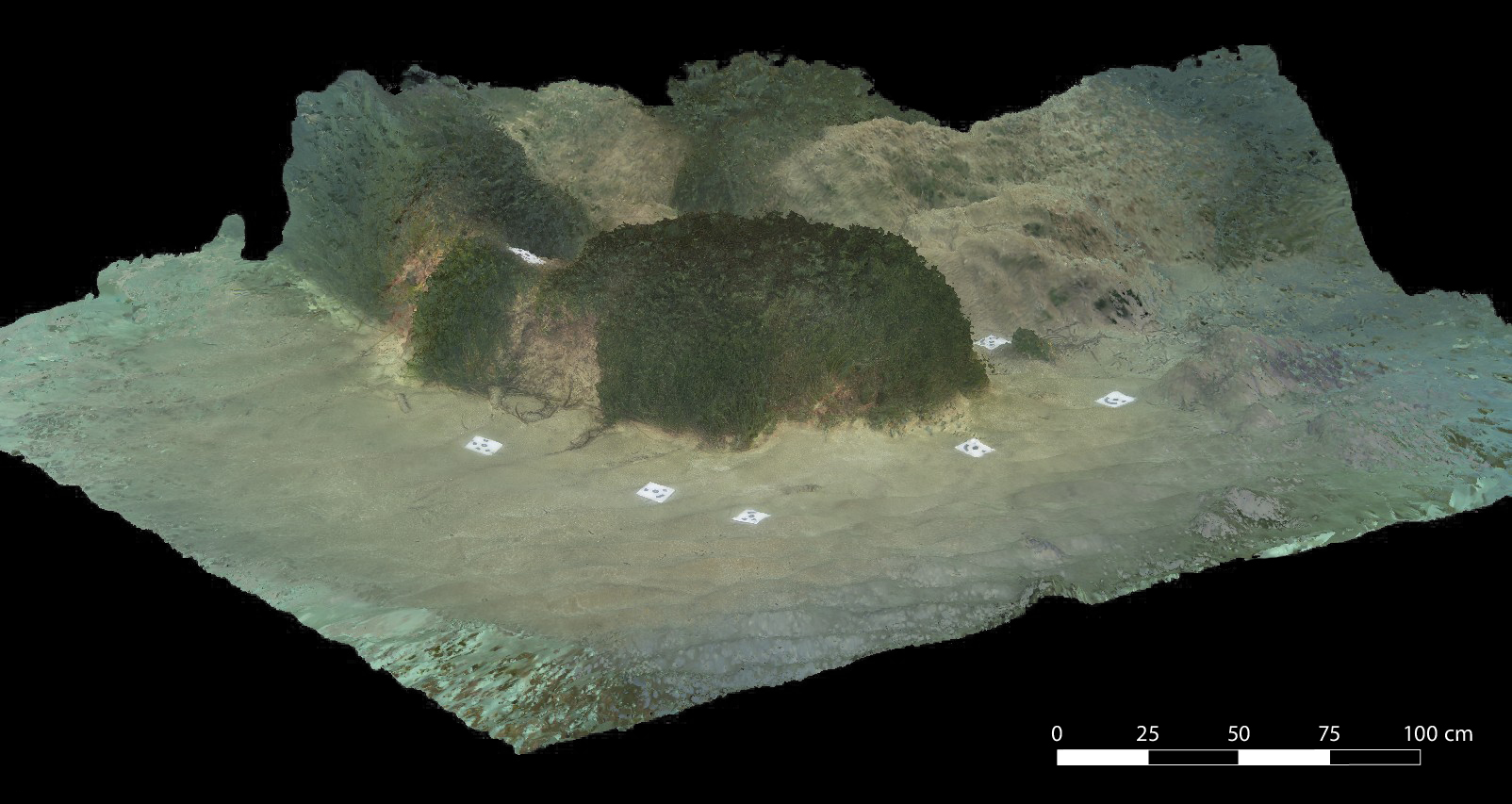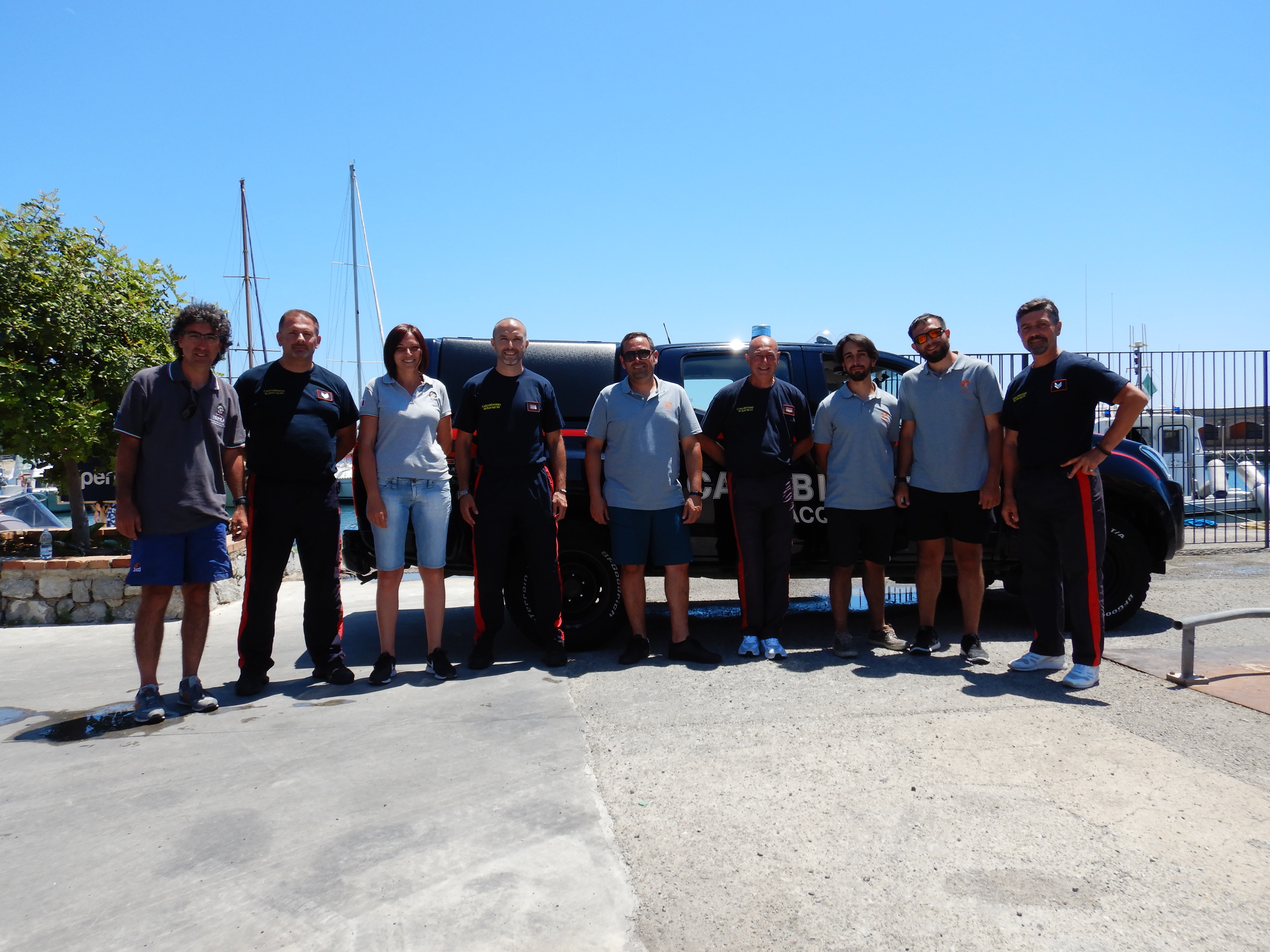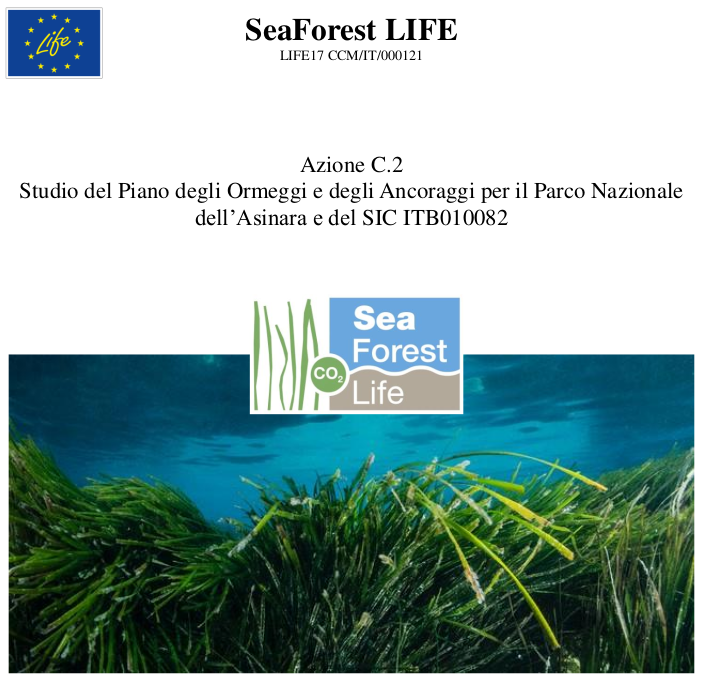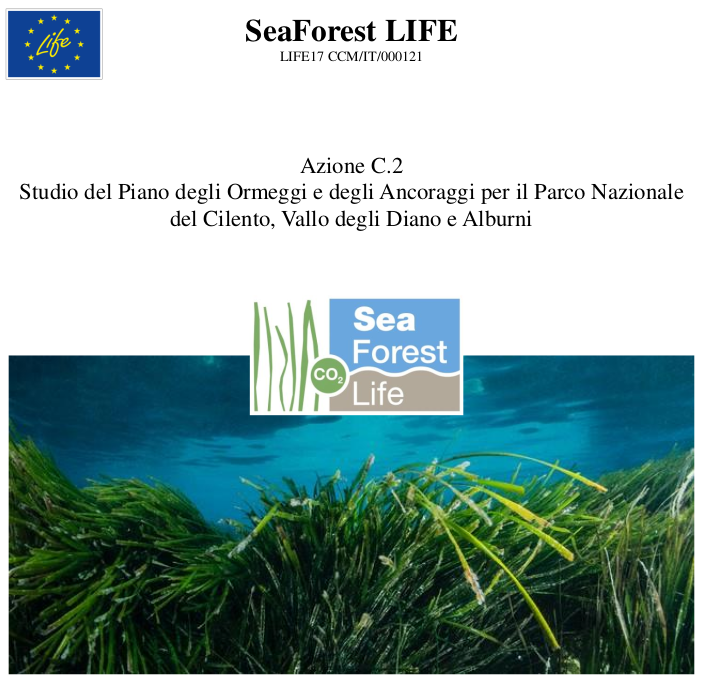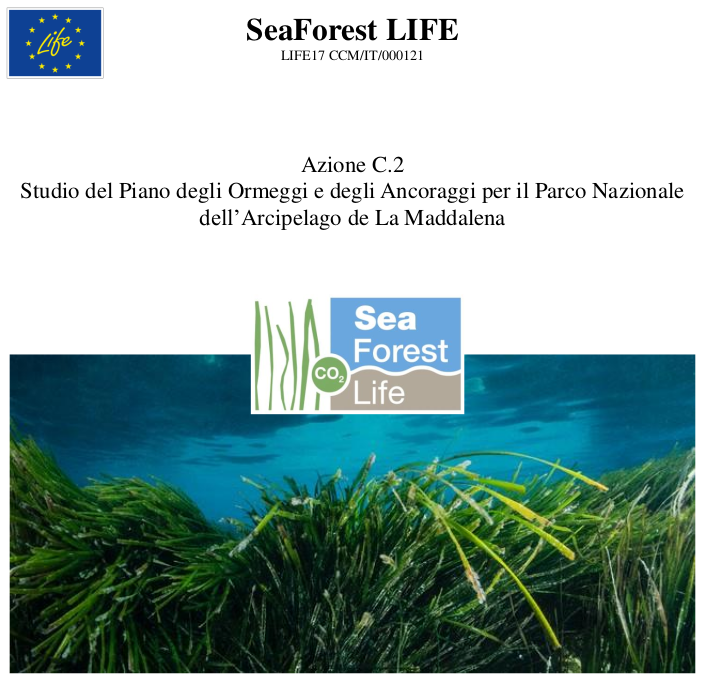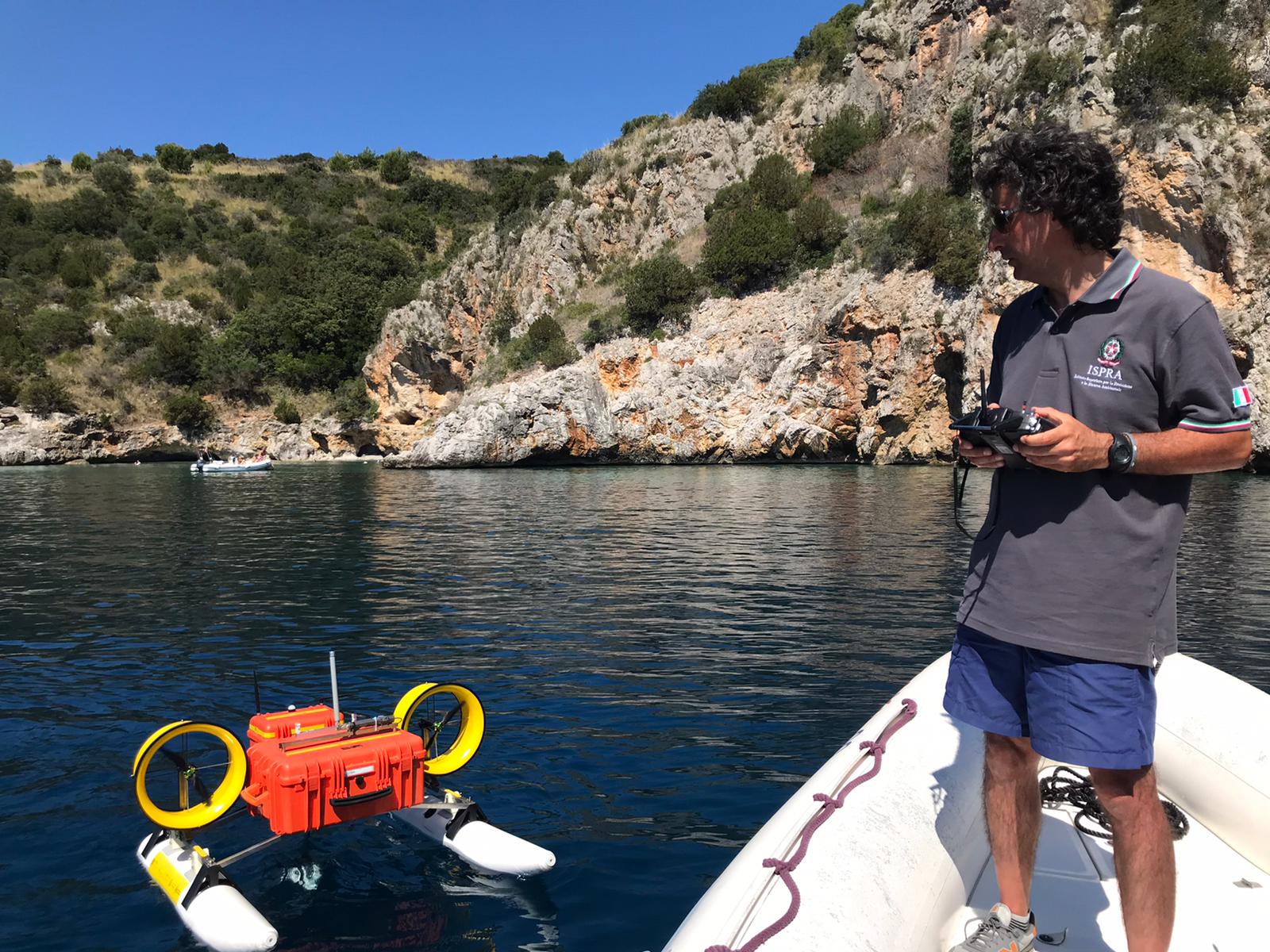
Data processing of the DEVSS autonomous surface vehicle
The data acquired by the SeaForest LIFE project, thanks to the partner ISPRA, with the autonomous surface vehicle DEVSS "DEvelopment Vehicle for Scientific Survey" using the Biosonics acoustic sensor, during the campaign carried out at the Marine Protected Areas of Santa Maria di Castellabate and Porto Infreschi, at the Cilento, Vallo di Diano and Alburni National Park, were developed with the support of Prof. Erhan Mutlu of Akdeniz University - Turkey.
Posidonia biomass data expressed in grams/m2, accompanied by geographic coordinates, and the height of the canopy in meters were obtained. In order to validate the biomass protocol, through the indirect estimation. The project is carrying out tests with underwater photogrammetry and by analyzing satellite images with the support of the Spin-Off 3D Research of the University of Calabria.
To date, for the Cilento, Vallo di Diano and Alburni National Park, we have prepared an important database for the Blue Carbon component of the project. The acquired data will be transferred shortly by ISPRA to colleagues of the University of Tuscia for the enhancement of the INVEST model.
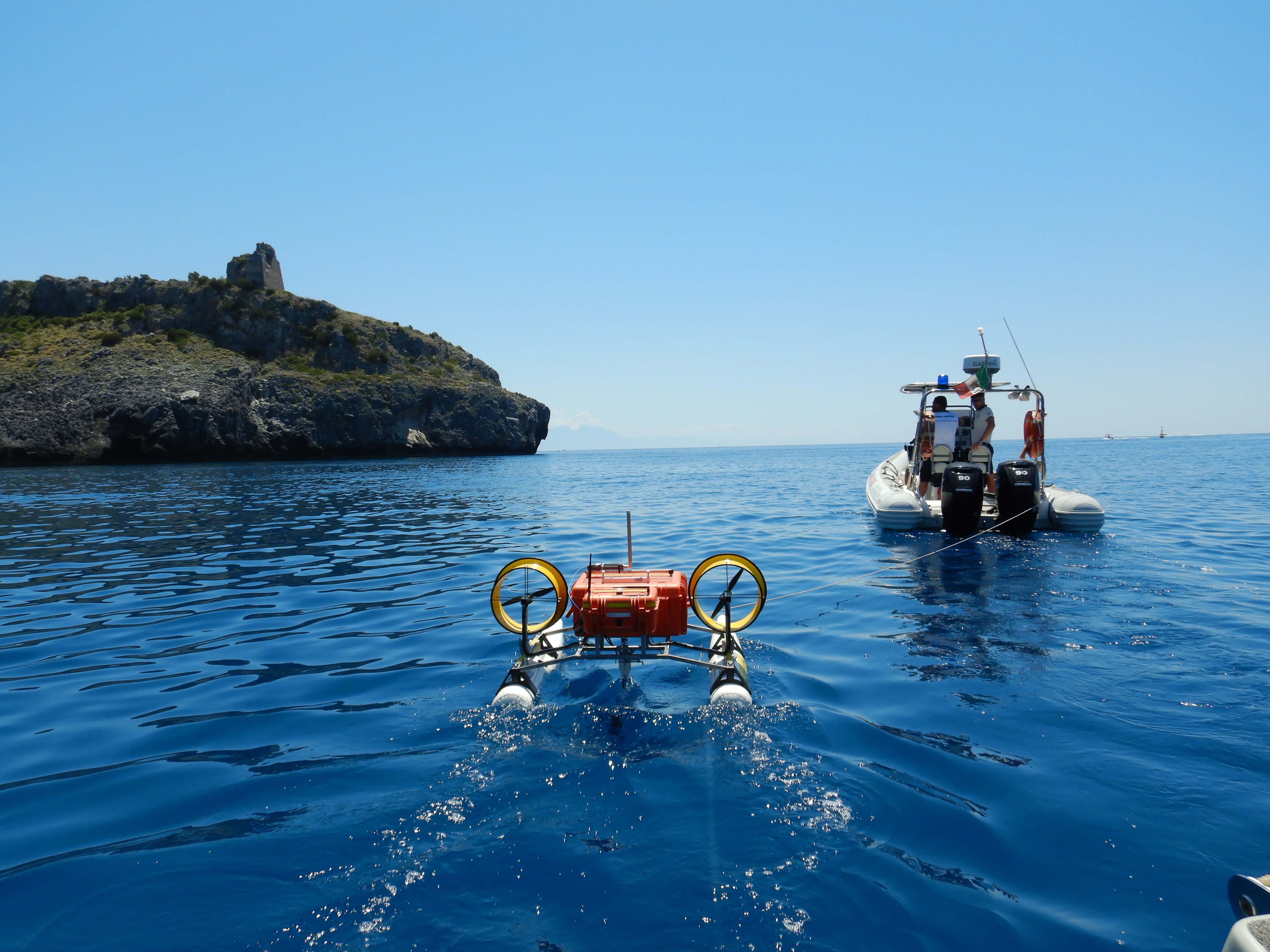


A Dutch master thesis that talks about SeaForest LIFE
Conservation of Posidonia oceanica in the Mediterranean Sea - A case study analysis of barriers to the conservation of Posidonia and the role of contextual factors from a social-ecological perspective
It is the title of the master thesis of a student from Maastricht University, Dagmar Croes, who also spoke about our LIFE project in her research.
Abstract
Because of the valuable ecological functions and ecosystem services Posidonia oceanica meadows provide to nature and humans, the critical consequences associated with their deterioration and the irreversibility of losses, it is crucial to protect and conserve the Posidonia meadows that exist today. The continuous regression of Posidonia, despite extensive policies at the EU level, and the disagreement about its conservation indicate context dependency and the presence of barriers situated at the local level. This research therefore aims to get a better understanding of these barriers to the conservation of Posidonia and the role of contextual factors from a social-ecological perspective. Because there are prima facie reasons to suppose that island and mainland sites will present different challenges to Posidonia conservation, the research project explores this hypothesis through a comparative case study approach, while applying the DPSIR framework. The main research questions addressed are: “Do island and mainland coasts face different barriers in the conservation of Posidonia oceanica and, if so, what are the contextual factors determining these barriers?” and “What measures can be taken to overcome barriers to the conservation of Posidonia?” The research revealed barriers relating to lack of awareness, policy constraints, and knowledge uncertainty that were not linked to the specific island or mainland contexts. Recommendations to overcome these barriers involve awareness raising, boundary work, and communication and consensus building.

On-line the management plan of the anchorages and moorings of the 3 National Parks
The management plans for the anchors and moorings of the 3 National Parks can now be downloaded from the Products section of our website.
The drafting work was coordinated by the project partner IAS-CNR of Oristano and involved, in addition to the 3 National Parks, also the coordinating beneficiary D.R.E.Am. Italy and the partner ISPRA.
The Mooring Plan plays a key role in pursuing the conservation objectives of habitat 1120, as it is specific to the site for which it is drawn up, and also provides an overview of the necessary site-specific measures.
The philosophy of the work is based exclusively on the protection of the priority habitat 1120, and does not in any way want to modify or enter into the regulations in force, relating to the use and protection of the Marine Protected Areas (MPAs) affected by the project, as already they perfectly comply with Community and national regulations on environmental protection and priority habitats.
The issues dealt with depending on the behaviour of the individual user who can be directed towards more sustainable use of resources only through the synergy of the various institutions that manage and control the territories concerned in various ways, through the development of appropriate management tools and naturally carrying out activities of information, awareness and environmental education.
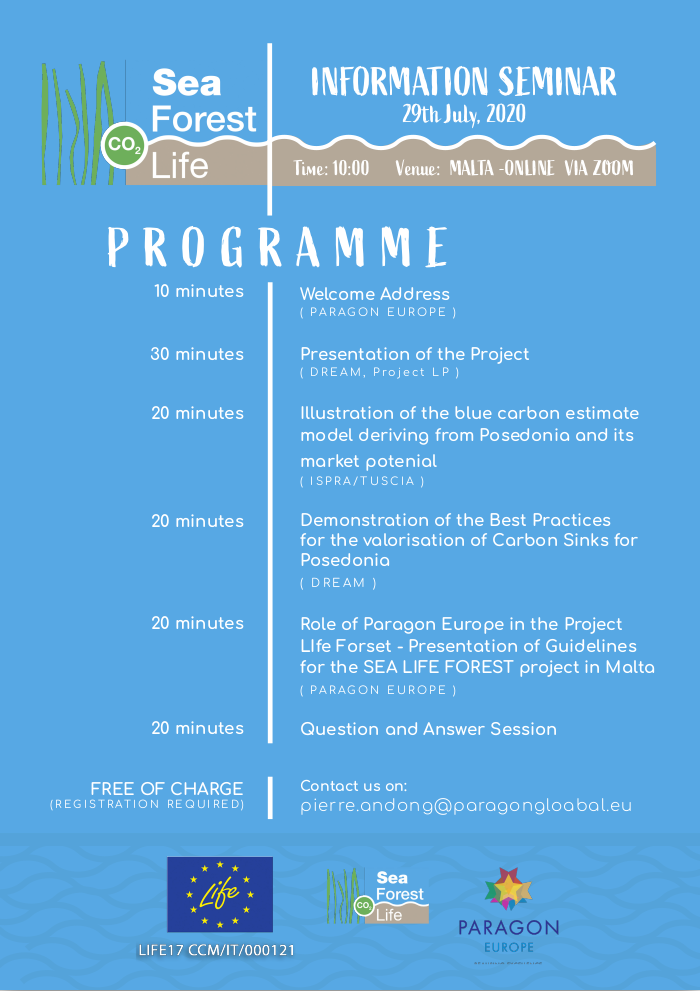
First meeting with Malta stakeholders
The first meeting with Malta's stakeholders took place on 29 July to present the SeaForest LIFE project and the results achieved so far.
This first meeting is essential to establish a dialogue with local institutions, managing bodies and the world of research in order to be able to export the project also to Malta.


Sampling activities in the Cilento, Vallo di Diano and Alburni National Park
The sampling activities carried out at the Cilento, Vallo di Diano and Alburni National Park were successfully completed. In these 5 days, the ISPRA project partners have performed numerous diving activities, aerial flights with the drone, acquisitions with the surface vehicle and the canoe. 5 intense days, spent alongside the staff of the Carabinieri Corps of the Underwater Corps of Naples and the staff of the 3D Research, a Spin-off of the University of Calabria, which ended with the service of the RAI television program "Linea Blu" which it will be broadcast on 11 July at 2 pm on RAI1. The collected Posidonia oceanica samples were delivered to the colleagues of the University of Tuscia who from today have started the first analysis activities.
ISPRA and the whole project is keen to thank the Park for the support received and for having promptly contacted the competent maritime authorities.
